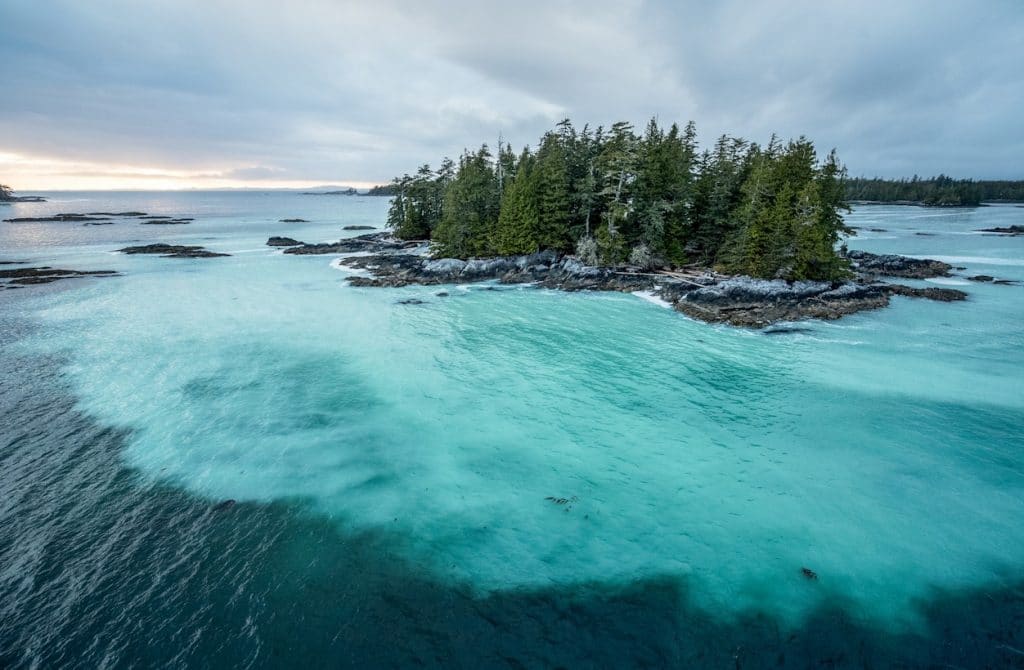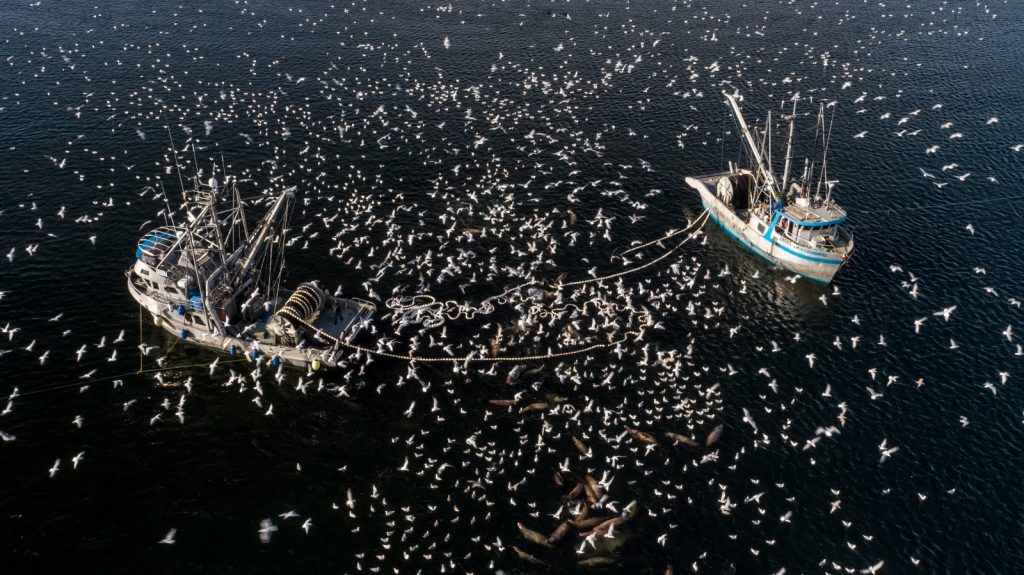In 2024, many observers pointed to the fact that there seemed to be more spawn in the Strait of Georgia (SoG) than in previous years. Some are quick to hail this year’s spawning events as a monumental success, indicating that herring stocks are on the rise and we need not worry. The future looks a brilliant shade of turquoise blue, hooray! Indeed, herring spawn did return to areas like Fisgard Light, Ganges and Long Harbour as well as Port McNeill, areas where spawn has been absent for many years or, in the case of Port McNeill, never documented before until very recently.
From the data available at the date of publication DFO has reported 42.6 nautical miles of observed spawn in the annual flight program in Areas 14 (Comox, Parksville, Denman and Hornby Islands) and 17 (Nanaimo), nearly double the 25.1 nautical miles of spawn recorded by flight surveys in 2023. After the dive surveys were said and done, DFO reported a total of 55.4 nautical miles of spawn in the SoG major stock assessment region in 2023 and we anticipate the current 42.6 nautical mile figure to increase after the preliminary results from dive surveys in 2024 are released.1
1 Cleary, J., & Grinnell, M. (2023). Pacific herring preliminary data summary for Strait of Georgia 2023.

Bright future or signs of collapse?
These new and returning spawning sites are good news! Right? A more realistic answer is “maybe” with a big question mark at the end. The factors influencing the observed spread of spawn in the SoG are not so black and white. In the words of Dr. Joachim (Yogi) Carolsfeld of the World Fisheries Trust, the “new” or revived small spawning areas in recent years may indicate a “bright future or sign of collapse.”
On the one hand, there is a theory that these are satellite spawning sites that are used as overflow when the central SoG spawning stock is high. However, it seems unlikely that this year’s herring stock is high enough to warrant overflow; furthermore, an evaluation of this theory in the 1980s did not find significant correlation.
On the other hand, there is some evidence and Indigenous understanding that older fish hold important knowledge, like where to spawn, and they pass this knowledge on to younger fish as they join the older schools. This social learning may transmit migratory knowledge between generations. This loss of knowledge may have contributed to the loss of many old spawning locations, as these small herring stocks did not learn where to go or were wiped out before they got there. This may have also resulted in the loss of most local genetic differentiation. Now, the dispersion of spawning fish into new areas we are seeing may be herring of the major stock that have lost their way because older fish have been fished out indicating signs of a pending collapse in the major stock, as may have been the case in Haida Gwaii. Alternatively, something “new” may be happening that is resulting in the current dispersion, either creating this effect on its own, or in combination with other causes.

Impacts of Dispersal
Dr. Carolsfeld feels that such greater diversity of spawning sites surfacing in recent years may yield better overall survival for developing eggs and larvae. If they are all concentrated in one area, they are all subject to the same mortality from locally high predation, low food, and oceanic factors. If they are more dispersed, survival will likely be different between the spawning areas. However, this advantage individually may not be significant enough to boost the stocks exponentially as needed to get back to the overall abundance of herring we would like to see. Future abundance still depends largely on the survival of large migratory stocks.
Victoria Spawn Case Study
The spawn at Fisgard Light in Victoria B.C. two years ago (2022) and this year (2024), suggests that something interesting is happening. Herring can live for 15 years at most, but before 2022 this area hadn’t seen spawning activity for years, much longer than the lifespan of the oldest herring today, yet something about the location drew herring in to spawn in 2022. Insignificant numbers also swam up the nearby Esquimlat Gorge, where historically herring were once very populous (with a unique and distinct genome) and spawned on the eelgrass in the Gorge Waterway. Today, herring spawn in the Gorge is absent, which is maybe a learning that has been lost. The return to Fisgard this year, primarily by two-year-old fish, who did not go up the Esquimalt Gorge, suggests that there was a homing-type of memory created. DNA and otolith analysis can help tell us where the herring have come from. The Fisgard herring, better named Lekwungen (lək̓ʷəŋən) herring, may provide some clues over the coming years to help us understand better what is happening.
While Dr. Carolsfeld cautions that this phenomenon is not likely an indicator of “overabundance” of herring in the Strait of Georgia, he is optimistic that it is a sign that herring are “climate proofing” through diversification in a fashion that we have underestimated in the past. There is some evidence that the species has done this in the past in the Arctic, and maybe locally as well. Without all the government data from 2024this year, it’s hard to hail this year as a success without anything but cautious optimism. An increase or diversification of fishing quotas based on this preliminary data would interfere with the process and is something to avoid.
We need to allow the herring to recover.
Join First Nations leaders and researchers as they unravel the mystery behind the vanishing herring spawn. Learn more about the critical need for conservation to protect this vital species in the Strait of Georgia.

